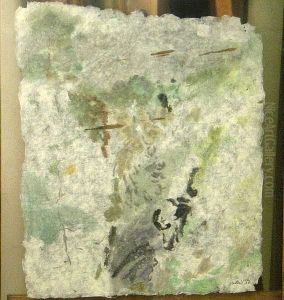John Wardell Power Paintings
John Wardell Power, often known simply as J.W. Power, was an Australian artist known for his contributions to modernism and his works that spanned a variety of mediums, including painting, drawing, and sculpture. He was born on September 25, 1881, in Sydney, Australia, into a well-to-do family. He initially pursued a career in medicine and graduated from the University of Sydney in 1906. After serving as a doctor during World War I, Power's experiences led him to shift his focus from medicine to art, a transition that reflected his search for new meaning in the aftermath of the war.
Power moved to Europe in the early 1920s, settling in Paris, which was then the epicenter of the avant-garde art world. There, he was influenced by the burgeoning movements of Cubism and Surrealism. He studied at various institutions, including the Académie Julian, and was particularly impacted by the works of artists like Pablo Picasso and Georges Braque. Power developed his own distinctive style, infusing cubist principles with a dynamic sense of movement and bold use of color. Throughout the 1920s and 1930s, he exhibited his works in Paris and also in London, becoming a respected figure within the modernist circles.
Not only was Power an active artist, but he was also a collector and patron of the arts. He amassed a significant collection of modern art, which he bequeathed, along with a large part of his fortune, to the University of Sydney to promote the study of art. This bequest led to the establishment of the Power Institute of Fine Arts at the university, which has since become a leading center for the study of art history in Australia.
Power's legacy is not only in his own artworks but also in his philanthropic contributions to the arts. He is remembered as a key figure in the introduction of modernist art to Australia and for his support of the academic study of art history. J.W. Power died in London on December 5, 1943. His works are held in several public collections, including the Art Gallery of New South Wales and the National Gallery of Australia.
